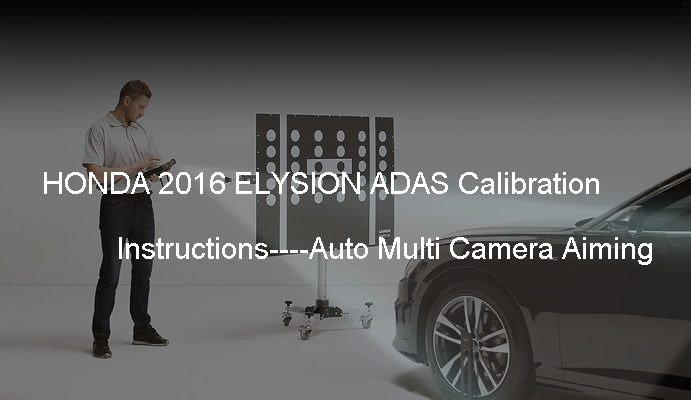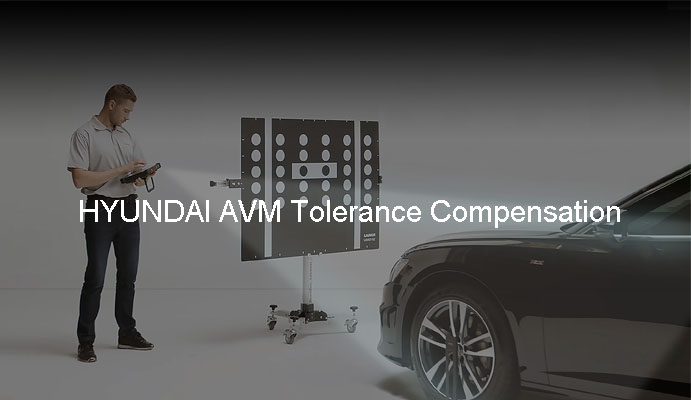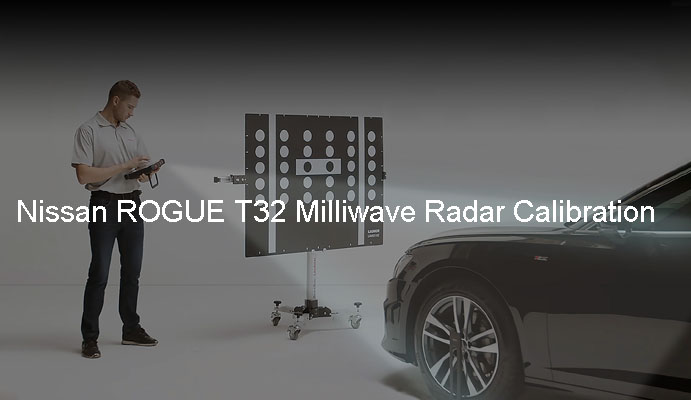A portable wheel alignment machine is a compact mobile device designed for vehicle wheel alignment. Unlike traditional alignment systems, which are often large, fixed, and installed in a garage or workshop, portable alignment machines are lightweight and easily transportable. This makes them ideal for mobile mechanics and smaller workshops that may not have the space or resources for a full-scale alignment setup.
The portable alignment machine is a device specifically used to calibrate and adjust the relative position of the four wheels of a vehicle. It is designed with portability in mind while ensuring operational accuracy, and is suitable for a variety of automotive repair and maintenance situations. The following are some of the features that a portable alignment machiner may have:
1. Four-wheel alignment calibration
Functional description: The core function of the portable alignment machine is to calibrate the four wheels of the vehicle to ensure that each wheel is consistent with the geometric center line of the vehicle when driving. This process includes the measurement and adjustment of toe, camber, and caster.
Improvement effect: Through precise four-wheel alignment calibration, the vehicle can avoid deviation and running off the track during driving, and improve the vehicle's straight-line driving stability.
2. Wheel toe adjustment
Functional description: Toe adjustment refers to the inward and outward tilt angle of the wheel in a plane relative to the centerline of the vehicle. The portable alignment machine can accurately measure and adjust the toe angle of the front and rear wheels to ensure the correct direction of the wheels when driving.
Improvement effect: Correct toe adjustment can reduce tire wear and improve vehicle handling, especially at high speeds.
3. Camber adjustment
Functional description: Camber refers to the inclination angle of the wheel relative to the vertical axis. The portable wheel alignment machine can measure and adjust the camber angle of the wheel to make it perpendicular to the ground or set according to the manufacturer's standard.
Improvement effect: Accurate camber angle adjustment helps optimize the vehicle's grip and stability when turning and reduces lateral wear of tires.
4. Caster adjustment
Functional description: The caster angle refers to the inclination angle of the steering axis relative to the vertical line. The portable alignment machine can measure and adjust the caster angle to ensure the balance and return torque during steering.
Improvement effect: Correct kingpin caster angle setting helps to improve the vehicle's steering stability and directional stability when driving in a straight line, and enhances driving comfort.
5. Wheel distance and wheelbase measurement
Function description: Portable wheel alignment machines are usually also equipped with wheel distance and wheelbase measurement functions, which can detect and correct the distance difference between the front and rear wheels to ensure that the four wheels of the vehicle are in the same straight line.
Improvement effect: Accurate wheel distance and wheelbase measurement helps to improve the overall balance of the vehicle and the accuracy of the driving direction, and prevent the vehicle from running off the track or tilting while driving.
The portable alignment machine can comprehensively improve the driving stability, handling and safety of the vehicle through these main functions. These functions ensure the stability of the vehicle under various road conditions, reduce abnormal wear of tires, extend the service life of the vehicle, and also provide a more comfortable and safe driving experience.
Portable wheel alignment machines are similar in function to traditional fixed aligners, but have many unique advantages in design and usage scenarios, making them more applicable in some cases. The following are the unique features and advantages of portable wheel aligners over traditional fixed aligners:
1. Mobility and portability
Unique Features: Portable wheel aligners are lightweight and usually come with a folding structure or detachable components for easy carrying and transportation.
Advantages: This design allows technicians to easily bring the device to different work locations, whether it is at the customer's home, on the roadside, in the garage, or in other mobile repair services, and can quickly start operations. This is especially important for mobile technicians who provide field services and service teams that need flexible repairs.
2. Low space requirements
Unique: Portable wheel alignment machines do not require a large fixed space or to be installed in a dedicated work area.
Advantages: For small workshops with limited space, mobile maintenance vehicles or occasions where temporary maintenance points need to be set up, portable four-wheel alignment can work efficiently in a small space without being restricted by the environment.
3. Quick setup and operation
Unique Features: Portable wheel alignment machines are usually designed to be easy to install and remove, and are simple to operate, reducing equipment preparation time.
Advantages: Traditional fixed locators usually require fixed installation, calibration and commissioning, while portable alignment machine can be set up and start operating in minutes. This fast setup capability greatly improves maintenance efficiency, especially in time-sensitive situations.
4. Flexible application scenarios
Uniqueness: Portable wheel alignment machines can be used in a variety of different environments and are not limited to fixed work locations.
Advantages: Traditional fixed wheel alignment machines can usually only be used in specific workshops or factories, while portable alignment machines can be operated anywhere they are needed. This makes it particularly suitable for scenarios that require rapid response and operation, such as mobile maintenance and racing car tuning.
5. Adaptability
Unique Features: Portable wheel alignment machines are usually well-adaptable and compatible with different sizes and types of vehicles.
Advantages: While traditional fixed-mount wheel alignment machines may be designed for a specific vehicle type, portable wheel alignment machines are often more versatile and can accommodate a wide range of vehicle types. This versatility allows the device to be used in a wider range of applications.
Choosing the right portable alignment machine is essential to ensure the accuracy of vehicle wheel alignment, improve operational efficiency, and meet the needs of different work scenarios. Here are some key factors and suggestions to help you make an informed choice:
1. Accuracy
Criticality: Accuracy is one of the most important factors when choosing a portable alignment machine. A high-precision alignment machine can ensure the accuracy of wheel alignment and reduce tire wear and driving instability caused by improper alignment.
Tip: Choose a machine equipped with advanced measurement technologies, such as 3D imaging, lasers, or models with high-precision sensors. These technologies provide more accurate measurements.
2. Ease of operation
Criticality: Portable alignment machines should be easy to operate, especially when they need to be deployed and used quickly. Simplified operation processes and intuitive interfaces can improve work efficiency.
Tip: Look for a device with a user-friendly interface, preferably with quick calibration and auto-leveling features. Also look for wireless operation and data transfer, which will further simplify operation.
3. Compatibility
Criticality: The portable alignment machine needs to be suitable for a variety of vehicle models and wheel sizes to meet the needs of different customers.
Tip: Choose a model with broad compatibility that supports a wide range of vehicles.
Criticality: Durability and portability are important features of a portable alignment machine. The device should have a rugged structure to withstand frequent movement and field use.
Tip: Choose a model that is made of high-quality materials and is lightweight enough to be easily carried and moved. It’s also worth considering models that have a folding design or come with a carrying case.
5. Brand reputation and after-sales service
Criticality: Brand reputation and after-sales service are also factors that cannot be ignored when purchasing a portable alignment machine. Well-known brands usually have better guarantees in terms of technology, quality and service.
Tip: Choose a brand that has a good reputation in the market and make sure it provides comprehensive after-sales support such as warranty, technical support and training services.
When choosing a portable wheel alignment machine, you need to consider the accuracy, ease of operation, compatibility, durability, brand reputation and market feedback of the equipment. By comparing different brands and models, combined with user reviews and actual needs, you can find the most suitable portable wheel alignment machine to ensure efficient and accurate wheel alignment services.
Portable wheel alignment machines are widely used in the field of automobile maintenance due to their convenience and efficiency. The following are some practical application cases that show how portable alignment machines can help maintenance technicians improve work efficiency and accuracy in different scenarios.
Case 1: Application in mobile car repair service
Background: A racing team needs to quickly perform four-wheel alignment on the car before and after the race to ensure the best performance of the vehicle on the track.
Solution: The team chose a high-end portable wheel aligner that not only provided a high degree of accuracy but also had the advantage of rapid deployment, perfect for the intense pace of the race.
Application effect:
① Improved car performance: Through fast and precise wheel calibration, car stability at high speeds and grip when cornering are significantly improved.
② Saves valuable time: During each stage of the race, the mechanics can complete the vehicle calibration work in a shorter time, leaving more time for other preparations.
③ Improved safety: Precise wheel alignment reduces the risk of vehicle loss of control on the track, ensuring the safety of racers.
Case 2: Application in a car repair shop
Background: A small auto repair shop wanted to provide high-quality wheel alignment services in a limited space. Due to space constraints, they could not install a traditional fixed alignment machine.
Solution: The shop purchased a mid-range portable wheel alignment that takes up less space while providing the same accuracy as a fixed model.
Application effect:
① Optimized space utilization: The compact design of the portable alignment machine enables repair shops to better utilize limited workspace and move the device to other areas when necessary.
③ Gained customer recognition: Due to the efficiency and precision of the equipment, the shop's customers were satisfied with its services, which resulted in an increase in its business.
With the development of the automotive repair industry and the advancement of technology, the demand for portable alignment machines in the global market has gradually increased. The following is an analysis of the demand for portable alignment machines in the current market, potential innovations in future technological development, and its application prospects in the global market, especially in mobile services and remote areas.
1. Current market demand and growth trends
The market demand for portable wheel alignment machines is mainly driven by the following factors:
① The rise of mobile repair services: As more and more consumers seek convenient mobile repair services, portable wheel aligners, as an efficient tool, meet this demand. Mobile repair technicians need to be able to provide high-precision four-wheel alignment services in different locations, and portable alignment machines are ideal for this field.
② Increase in car ownership: The number of cars in the world continues to grow, especially in emerging markets and developing countries. The demand for car maintenance in these regions continues to rise, prompting the gradual expansion of the portable alignment machine market.
③ The needs of small and medium-sized repair shops: Due to site and budget constraints, small and medium-sized repair shops prefer to choose affordable and flexible portable alignment machines to provide high-quality services in a limited space.
④ Technological progress: As the technology of portable wheel alignment machines continues to mature, their measurement accuracy and ease of operation have been significantly improved, further driving the growth of market demand.
It is expected that the portable alignment machine market will maintain a steady growth trend in the next few years. Especially as the automotive repair industry gradually transforms towards digitalization and intelligence, the market potential of such equipment will be more significant.
2. Innovation and improvement of future technological development
In the future, the technological development of portable alignment machines may bring a series of innovations and improvements:
① Artificial intelligence and automation technology: The application of AI technology can make portable alignment machines more intelligent. For example, it can automatically identify vehicle types and provide customized calibration solutions based on different vehicle models to reduce human errors during operation.
② Augmented reality (AR) assistance: AR technology may be introduced into portable alignment machines to help technicians see virtual prompts and guidance in real time during the calibration process, improving operational efficiency and accuracy.
③ Wireless transmission and cloud storage: With the development of Internet of things technology, portable alignment machines may support wireless data transmission and cloud storage. Technicians can access and analyze historical calibration data on different devices to improve the consistency and quality of services.
④ Lighter and more durable materials: Future portable wheel alignment machines may use new materials, such as carbon fiber or composite materials, to further reduce the weight of the device while enhancing the durability and pressure resistance of the device.
3. Global market potential and application prospects
Portable wheel alignment machines have great potential in the global market, especially in the following areas:
① Expansion of mobile services: As mobile repair services become more popular around the world, portable wheel alignment machines will become an indispensable tool in this field. Whether in developed or developing countries, consumers' demand for convenient services has driven the rapid development of the mobile repair industry, thereby driving the market growth of portable alignment machines.
② Remote Area Applications: In remote areas, where fixed maintenance equipment is expensive to install and maintain, portable alignment machines provide a flexible and economical solution. With portable alignment equipment, technicians can reach hard-to-reach areas and provide high-quality maintenance services to local areas.
③ Growing demand in emerging markets: The number of cars in emerging markets such as Asia Pacific, Latin America and Africa is increasing rapidly, but the repair infrastructure in these regions is still developing. Portable alignment machines are expected to be widely used in these markets due to their flexibility and low cost.
Portable alignment machines have shown strong market demand and growth potential in the current automotive repair industry. With the rise of mobile repair services, the increase in global car ownership and the continuous advancement of technology, this type of equipment will usher in more development opportunities in the next few years. Especially in the global market, portable alignment machines have broad application prospects in mobile services and remote areas, and are expected to become key tools in these fields. At the same time, with the introduction of new technologies such as artificial intelligence, augmented reality and the Internet of Things, the functions and performance of portable alignment machines will be further improved, providing technicians with a more efficient and accurate service experience.
Return


